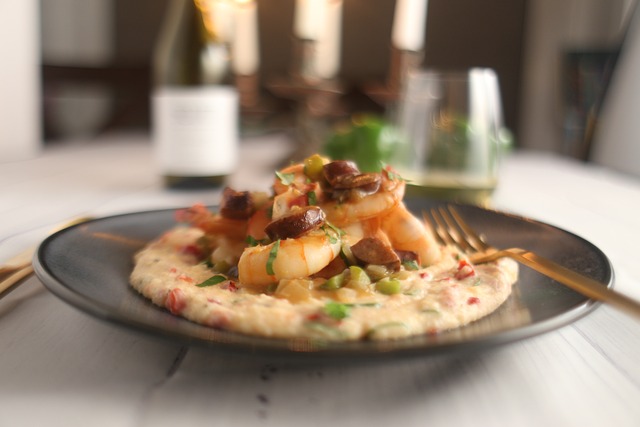
As Americans, we are proud of the melting pot of cultures and traditions that make up our great country. Nowhere is this more evident than in our diverse and delicious culinary traditions. From hearty Southern cooking to spicy Tex-Mex, from rich Creole dishes to fresh Pacific Northwest cuisine, each region of the United States boasts its own unique flavor profile and specialty dishes. Join us on a journey across the country as we explore the mouth-watering regional specialties that make American cuisine so irresistible.
Southern Cuisine
The South is home to some of the most iconic and beloved dishes in American cuisine, characterized by bold flavors, hearty portions, and an emphasis on comfort food. From crispy fried chicken to fluffy biscuits and gravy, Southern cuisine is all about indulging in rich, savory dishes that satisfy both the belly and the soul. Here are some key characteristics and flavors that define Southern food.
Flavors
Bold: Southern cuisine isn’t shy when it comes to flavor. Dishes are often seasoned with a combination of spicy, sweet, and tangy flavors to create a complex and satisfying taste. Think hot sauce, barbecue sauce, and pickled vegetables.
Savory: Meat is a common ingredient in Southern dishes, and it’s often slow-cooked or smoked to bring out its own unique flavor. Herbs and spices like thyme and paprika are also used to add depth and richness to dishes.
Sweet: Southern cuisine has a love affair with all things sweet. From sweet tea to pecan pie, sugar is a common ingredient in many Southern dishes, adding a touch of sweetness to balance out the savory flavors.
Dishes
Fried chicken: Perhaps the most beloved Southern dish, fried chicken is crispy on the outside and juicy on the inside. It’s often seasoned with a blend of spices and served with sides like collard greens, mashed potatoes, and cornbread.
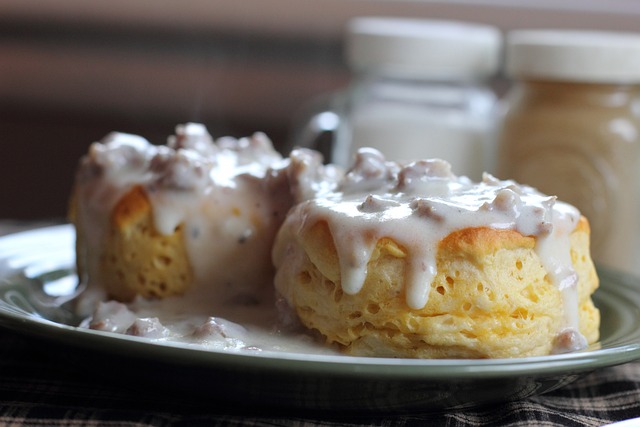
Biscuits and gravy: A Southern breakfast staple, biscuits and gravy is a dish of fluffy biscuits smothered in a creamy, peppery gravy made with sausage or bacon grease. It’s hearty and indulgent, making it the perfect comfort food.
Collard greens: These hearty greens are slow-cooked with meat and seasonings to create a flavorful and filling side dish. They’re often served with cornbread and either black-eyed peas or Hoppin’ John, a dish made with black-eyed peas and rice.
Cornbread: This staple Southern bread is made with cornmeal, buttermilk, and often bacon grease or butter for added richness. It’s crispy on the outside and fluffy on the inside, and it’s perfect for soaking up sauces and gravies.
Recipe: Southern-style Shrimp and Grits
Ingredients:
- 1 cup grits
- 4 cups water
- 1/2 cup heavy cream
- 1/2 cup grated cheddar cheese
- 1/2 tsp salt
- 1/2 tsp black pepper
- 1 lb shrimp, peeled and deveined
- 1/2 cup bacon, chopped
- 1/2 cup green onions, chopped
- 1 clove garlic, minced
- 1/2 cup chicken broth
- 1 tbsp lemon juice
- 1 tsp hot sauce
Directions:
- In a medium pot, bring water to a boil. Add grits and salt, reduce heat to low, and simmer for 20-25 minutes, stirring occasionally.
- Stir in heavy cream, cheese, salt, and black pepper. Keep warm.
- In a large skillet, cook bacon until crispy. Remove from pan and set aside.
- Add shrimp to pan and cook until pink, about 3-4 minutes. Remove from pan and set aside.
- Add green onions and garlic to pan and cook until fragrant, about 1-2 minutes.
- Add chicken broth, lemon juice, and hot sauce. Cook until reduced by half, about 5 minutes.
- Serve grits with shrimp and sauce, and garnish with bacon and additional green onions.
Tex-Mex: The Fusion of Texan and Mexican Culinary Traditions
When it comes to Tex-Mex cuisine, it’s all about the fusion of Texan and Mexican culinary traditions, resulting in a unique and delicious flavor profile. Tex-Mex dishes are characterized by bold flavors, spicy kick, and a generous amount of cheese. Here are some key characteristics and flavors that define Tex-Mex:
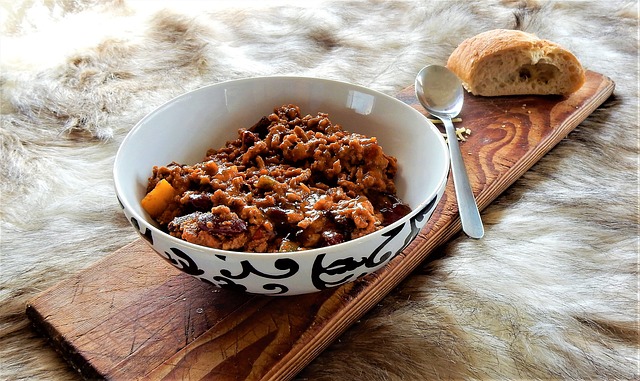
Texan Flavors: Tex-Mex cuisine takes its cues from Texan flavors, which means a generous amount of meat, barbecue, and spices. You’ll find plenty of beef, pork, and chicken in Tex-Mex dishes, often slow-cooked or smoked to bring out the flavors.
Corn is also a common ingredient, whether it’s in the form of a tortilla or chips. Spices like cumin, chili powder, and paprika are also used to add depth and richness to dishes.
Mexican Flavors: The other side of the Tex-Mex equation is Mexican flavors, which means plenty of heat, fresh ingredients, and bold flavors. You’ll find plenty of fresh herbs and vegetables, as well as a variety of chilies, including jalapeño, serrano, and habanero. Lime juice is often used to add a tangy kick, and cilantro is a common garnish.
Notable Tex-Mex Dishes
Tex-Mex cuisine boasts plenty of notable dishes, including the following:
Chili Con Carne: This hearty stew is made with ground beef, chili peppers, beans, and spices. It’s often served with tortilla chips or cornbread, and topped with shredded cheese and sour cream.
Enchiladas: These rolled-up tortillas are filled with meat or beans, topped with chili sauce or salsa, and baked with cheese on top. They’re often served with rice and beans, and can be made with a variety of fillings, including chicken, beef, or vegetables.
Fajitas: This sizzling dish is made with grilled strips of beef or chicken, served with grilled peppers and onions, and wrapped in a warm flour tortilla. It’s often served with guacamole, salsa, and sour cream on the side.
Recipe: Classic Beef Enchiladas
Ingredients:
- 1 pound ground beef
- 1 tablespoon chili powder
- 1 teaspoon ground cumin
- 1 teaspoon salt
- 1/2 teaspoon black pepper
- 1/4 teaspoon garlic powder
- 1/4 teaspoon onion powder
- 1/4 teaspoon paprika
- 1 can (10 oz) red enchilada sauce
- 1 cup shredded cheddar cheese, divided
- 8 corn tortillas
- Sliced jalapeños, optional
Instructions:
- Preheat the oven to 375 degrees F.
- In a large skillet, cook the ground beef over medium heat, stirring occasionally, until browned and cooked through, about 10 minutes.
- Add the chili powder, cumin, salt, black pepper, garlic powder, onion powder, and paprika to the skillet with the ground beef. Stir to combine and cook for another 2-3 minutes, until the spices are fragrant.
- Pour half of the enchilada sauce into a 13×9 inch baking dish.
- Soften the corn tortillas by wrapping them in a damp paper towel and microwaving for 30 seconds.
- Spoon the beef mixture onto each tortilla, and roll up tightly. Place each enchilada seam-side down in the baking dish.
- Pour the remaining enchilada sauce over the top of the enchiladas, and sprinkle with the shredded cheese.
- Bake for 20-25 minutes, until the cheese is melted and bubbly.
- Garnish with sliced jalapeños, if desired, and serve hot.
New England Fare: Seafood-Centric Cuisine and Seasonal Ingredients
New England is known for its incredible seafood and seasonal cuisine, featuring fresh ingredients from local farms and fisheries. From the famous clam chowder to lobster rolls and baked beans, this region boasts a rich culinary tradition that celebrates its land and sea. Here are some key characteristics and flavors that define New England fare.
Seafood-Centric: New England cuisine is renowned for its fresh seafood, from lobster and crab to cod and clams. These ingredients are often prepared simply, allowing their natural flavors to shine through.
Clam chowder, for example, is a creamy soup made with clams, potatoes, and onions, seasoned with salt pork and thyme. Lobster rolls are a popular sandwich made with chunks of lobster meat mixed with mayonnaise, served on a buttered and toasted hot dog bun.
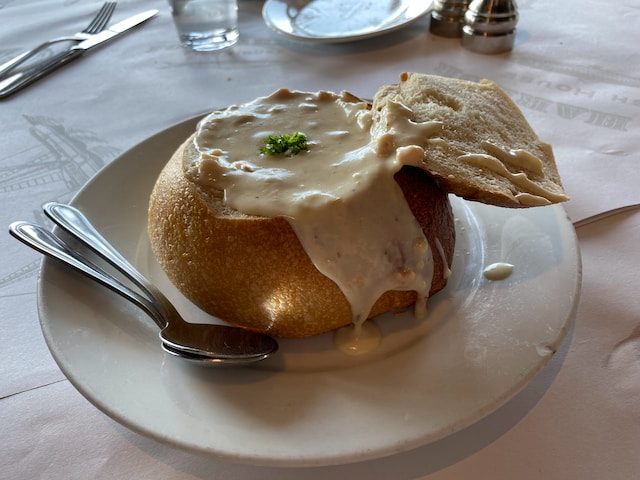
Seasonal Ingredients: New England is home to a variety of seasonal ingredients that are celebrated in its cuisine. In the fall, for example, apples are a common ingredient, used in dishes like apple crisp and cider donuts. In the spring, rhubarb is used to make pies and tarts. New England also boasts a variety of berries, including blueberries and cranberries, which are used in everything from muffins to sauces.
Famous Dishes: New England has several famous dishes that have become synonymous with the region’s cuisine. Clam chowder, as mentioned above, is a creamy soup made with clams, potatoes, and onions, seasoned with salt pork and thyme. Lobster rolls are a popular sandwich made with chunks of lobster meat mixed with mayonnaise, served on a buttered and toasted hot dog bun. Baked beans are a classic New England side dish made with navy beans, molasses, and salt pork.
Recipe: New England Lobster Roll
Ingredients:
- 1 lb lobster meat, cooked and chopped
- 1/4 cup mayonnaise
- 1 tbsp lemon juice
- Salt and pepper to taste
- 4 hot dog buns
- 2 tbsp butter
- Chopped chives for garnish
Instructions:
- In a medium bowl, mix together the lobster meat, mayonnaise, lemon juice, salt, and pepper.
- Heat a medium skillet over medium heat.
- Spread the butter on each side of the hot dog buns and place them in the skillet, cooking until they are toasted and browned.
- Divide the lobster mixture between the four buns and sprinkle with chopped chives for garnish.
- Serve immediately and enjoy!
The Pacific Northwest Cuisine
The Pacific Northwest is a region of the United States renowned for its natural beauty and diverse culinary traditions. With its miles of coastline, lush forests, and fertile valleys, the Pacific Northwest provides a bounty of fresh ingredients that are celebrated in its cuisine.
Pacific Northwest cuisine is centered around fresh seafood, berries, and foraged ingredients that are prepared with simple and natural cooking techniques. Here are some key characteristics and flavors that define Pacific Northwest cuisine.
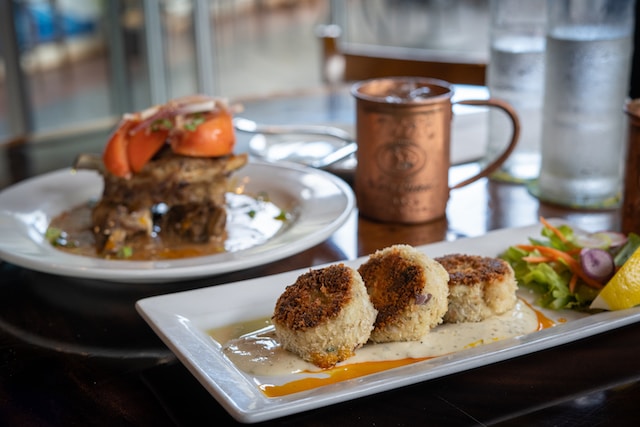
Emphasis on Fresh Seafood: The Pacific Northwest is known for its exceptional seafood, particularly salmon and Dungeness crab. Salmon is a staple of Pacific Northwest cuisine and is prepared in a variety of ways, from grilled fillets to smoked salmon. Dungeness crab, on the other hand, is commonly found in crab cakes, soups, and salads. Other seafood commonly found in Pacific Northwest cuisine includes halibut, clams, oysters, mussels, and shrimp.
Use of Berries: Berries are also a prominent feature of Pacific Northwest cuisine, particularly in the summertime. The region is known for its wild berries, such as huckleberries, blackberries, and raspberries, which are used in desserts, jams, and sauces. You can find them in pies, tarts, and even in savory dishes like sauces for salmon.
Foraged Ingredients: The Pacific Northwest is rich with an abundance of foraged ingredients such as wild mushrooms, nettles, and fiddleheads. These ingredients are incorporated into dishes and can be found in salads, soups, and stir-fries.
Famous Pacific Northwest Dishes: Pacific Northwest cuisine is home to several famous dishes that are unique to the region. One of them is the Dungeness crab cakes, which are made with fresh crabmeat, breadcrumbs, and spices. Another is cedar-planked salmon, which is prepared on a cedar plank, a traditional Pacific Northwest cooking method, and often served with a citrus glaze. Some other famous Pacific Northwest dishes include clam chowder, salmon burger, and lingcod fish and chips.
Recipe: Cedar-Planked Salmon with Citrus Glaze
Ingredients:
- 1 cedar plank
- 1 1/2 lbs. fresh salmon fillet, skin-on
- salt and pepper
- 2 tbsp. honey
- 2 tbsp. orange juice
- 1 tbsp. lemon juice
- 1 tbsp. lime juice
- 1 tbsp. soy sauce
- 1 garlic clove, minced
- 1 tsp. chopped fresh ginger
Instructions:
- Soak the cedar plank in water for at least 30 minutes.
- Preheat the grill to medium-high heat.
- Season the salmon fillet with salt and pepper.
- In a small bowl, whisk together the honey, orange juice, lemon juice, lime juice, soy sauce, garlic, and ginger.
- Place the soaked cedar plank on the grill and let it heat up for a few minutes until it starts to smoke.
- Place the salmon fillet, skin-side down, on the cedar plank.
- Brush the citrus glaze over the salmon fillet.
- Close the lid of the grill and let the salmon cook for 12-15 minutes, or until the salmon is cooked through.
- Use a spatula to remove the salmon from the cedar plank and serve.
The Vibrant Flavor of Cajun and Creole Dishes
Louisiana cuisine is a melting pot of French, Spanish, African, and Native American culinary traditions, resulting in vibrant flavors and an eclectic mix of ingredients.
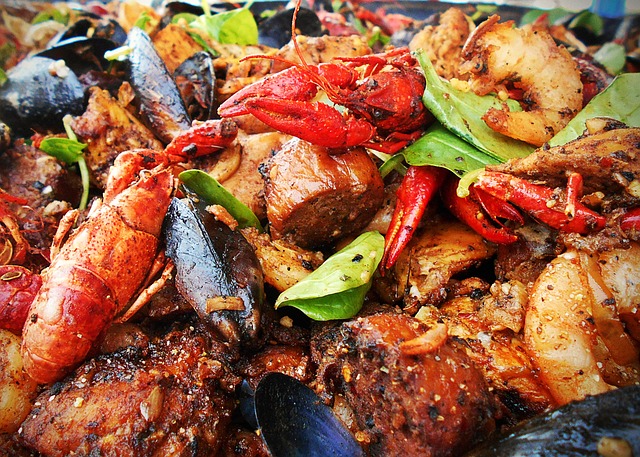
Cajun and Creole dishes are the most famous Louisiana cuisine, featuring bold spices, hearty ingredients, and unforgettable flavors. Here’s a closer look at the defining characteristics of Cajun and Creole cuisine and some of their notable dishes:
Cajun vs. Creole: What’s the difference?
Cajun and Creole cuisine are often used interchangeably, but they actually have distinct differences. Cajun cuisine is native to rural areas of Louisiana and is characterized by its reliance on locally available ingredients, which were often tougher cuts of meat and seafood. It’s simple, hearty, and full of bold flavors, featuring dishes like gumbo, jambalaya, and boudin sausage.
Creole cuisine, on the other hand, originated in New Orleans and has a more refined and sophisticated flavor profile. It features a mix of French, Spanish, and African influences, with an emphasis on complex sauces and spices. Dishes like shrimp étouffée, crawfish bisque, and red beans and rice are Creole classics.
Defining Characteristics of Cajun and Creole Cuisine
Spices and Flavors: Both Cajun and Creole cuisines are known for their bold and spicy flavors, with a heavy emphasis on herbs and spices. Creole cuisine’s complex sauces are seasoned with herbs like thyme, oregano, and basil, while Cajun dishes are often seasoned with cayenne, paprika, and black pepper. Other popular spices in Cajun and Creole cuisine include onion powder, garlic powder, and celery salt.
Seafood: Louisiana’s Gulf Coast is home to a bounty of fresh seafood, which is why it plays a prominent role in both Cajun and Creole cuisine. Shrimp, crawfish, oysters, and crab are all popular seafood options. The seafood is typically boiled, fried, or added to stews like gumbo and jambalaya.
Roux: A roux is a mixture of flour and fat that is used as a thickening agent in many Cajun and Creole dishes. It’s made by cooking flour and a fat source, like butter or oil, until it turns brown and has a nutty aroma. It adds depth and richness to dishes like gumbo and étouffée.
Recipe: Shrimp and Sausage Gumbo Recipe
Ingredients:
- 1 pound medium shrimp, peeled and deveined
- 1 pound andouille sausage, sliced
- 1/2 cup all-purpose flour
- 1/2 cup vegetable oil
- 1 onion, chopped
- 1 green bell pepper, chopped
- 2 stalks celery, chopped
- 4 cloves garlic, minced
- 6 cups chicken broth
- 1 tablespoon Cajun seasoning
- Salt and black pepper to taste
- Green onions, chopped (for garnish)
- Cooked rice (for serving)
Instructions:
- Heat oil in a large pot over medium-high heat. Add the flour and stir constantly until the roux turns a dark brown color (about 10-15 minutes).
- Add the onion, bell pepper, celery, and garlic to the pot and cook until soft (about 5 minutes).
- Add the andouille sausage to the pot and cook until browned.
- Stir in the chicken broth and Cajun seasoning, then bring to a boil. Reduce the heat and let simmer for 30 minutes.
- Stir in the shrimp and cook until they turn pink (about 5-7 minutes).
- Season with salt and pepper to taste.
- Serve over cooked rice and garnish with chopped green onions.
American cuisine is a true reflection of the diverse cultures and traditions that make up our country. From the bold and spicy flavors of Southern and Tex-Mex cuisine, to the fresh and seasonal ingredients of New England and Pacific Northwest fare, to the unique blend of influences found in Louisiana’s Cajun and Creole dishes, each region boasts its own delicious specialties. As Americans, we are fortunate to have access to such a wide range of culinary traditions, and we should savor and celebrate these flavors that make our cuisine so irresistible.
